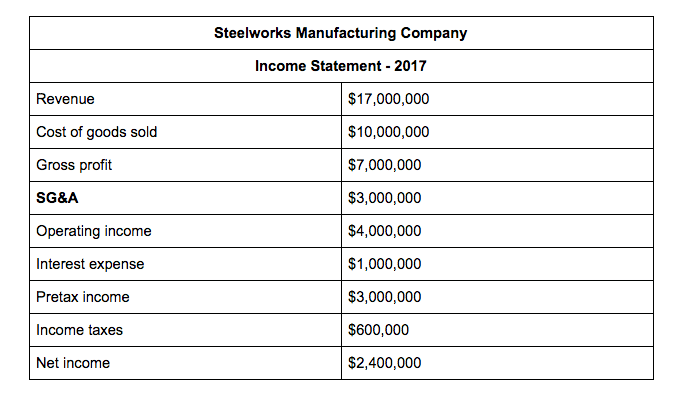How to Create an Effective Onboarding Checklist for Accounting Clients

First, you need to create a space in your project management workflow for the new client. This could be a new Google Drive folder or Notion page, a board on Trello or monday.com, a new client in your time tracking app, or anything in between. The steps you need to take to add a new client workspace will vary based on your project management tool of choice, so make sure you customize the checklist accordingly. Going through the chart of accounts prior to starting your accounting services means that you will spend less time later reclassifying older transactions and financial statements.
This way, income tracking is automatic, and you can avoid manually transferring numbers between apps. If you want to streamline your client onboarding workflow, you can use Zapier to connect your favorite apps. Start by choosing one step in your onboarding flow to automate, and go from there. Automating even a few steps in your process can clear up mental space for more high-impact tasks.
If your client selected one of the higher tiers of QuickBooks Online, you can directly import the bank statements when the bank accounts are updated. Additionally, it should cover the banking establishments that are used by the company. You want to ensure you are aware of all of the movement of funds within the company. This is also a good time to take inventory of any personal accounts that are linked to the company accounts that regularly contribute funds and take withdrawals.
Free Webinars for Accountants
- You could track all of these processes using a spreadsheet or Google Docs, but there’s no need to reinvent the wheel.
- This would be good for those just starting the business with no accounting yet.
- Though QuickBooks Online doesn’t have a KYC template, you’ll want to look for a third-party app that can provide you with such a template.
Implementing a clear client communication strategy will ensure effective client relationship management and help you build trust with your clients. We took a hard look at how we onboard new clients at Audience Ops, the blog content service that I started a few years earlier. What seemed to work for our earliest clients simply wasn’t scaling as the business started maturing. No matter what service you’re providing, you’ll how to easily write a promissory note for a personal loan to family or friends likely have some files to share, whether it’s a pitch deck, an article draft, a personalized fitness plan, or anything in between. So all that’s left to do is send it to the client—and then refresh your email over and over as you wait for feedback.
You will also need an item list for items they sell along with existing inventory and basis. I am also trying to find this, after going through the training, and would appreciate any assistance. Before having the client set up QuickBooks Online, having a meeting to establish which types of reporting they need means that you can get them set up on the right version from the outset.

Set up your project plan
You need to make sure these payments and deposits are not incorrectly entered as income or expenses. This meeting can be done virtually or in person, but having a kickoff meeting will allow you to discuss the company’s financial structure. The discussion should include the number of bank accounts, credit cards, and loans that the company has. Once you’ve set up your client’s bank feed on QuickBooks Online, you can import their historical bank transactions into QuickBooks Online. Once imported, categorize all transactions based on the client’s chart of accounts.
related articles you may like.
This would be good for those just starting the business with no accounting yet. For those who already have business ongoing, you’ll also need your open invoices and bills. Though QuickBooks Online doesn’t have a KYC template, you’ll want to look for a third-party app that can provide you with such a template. This gives you access to additional features not available to regular users such as the ability to undo reconciliations and batch reclassification of entries. All QuickBooks Online subscriptions come with the ability to add two accountants. You can be added as the bookkeeper and the client can also grant what is an s corporation their CPA access to their books.
The bank feeds provide a complete picture of the transactions in the bank, although they need to be reviewed for accuracy through regular reconciliations. Creating a special folder, channel, or label for the new client in your inbox or chat app helps you stay organized. And if there are still some details to sort out, use this step of the client onboarding template to schedule a kickoff call with your favorite meeting scheduler. From there, you can schedule regular touchpoint meetings to update your client on their projects. If you want to make bookkeeping easier (and less prone to human error), you pro forma financial statements definition can connect your payment processor to your accounting app.
You could also trigger a notification whenever you move a new file to your client’s folder, with an automation like one of these. Your customer onboarding process will vary a bit in this step of the template, depending on who holds the contract. Sometimes, your client’s company has an NDA or contract from the legal team that they want you to sign. If that’s the case, you have to wait for the client to initiate this step—or nudge them to do so.
The onboarding process is a client’s first chance to get to know your business properly. Being onboarded with a standardised process from start to finish helps to build your clients’ confidence in your business, saves time and keeps things moving. For the purposes of this article, onboarding is defined as the process of bringing a new client on board, incorporating training and orientation.




